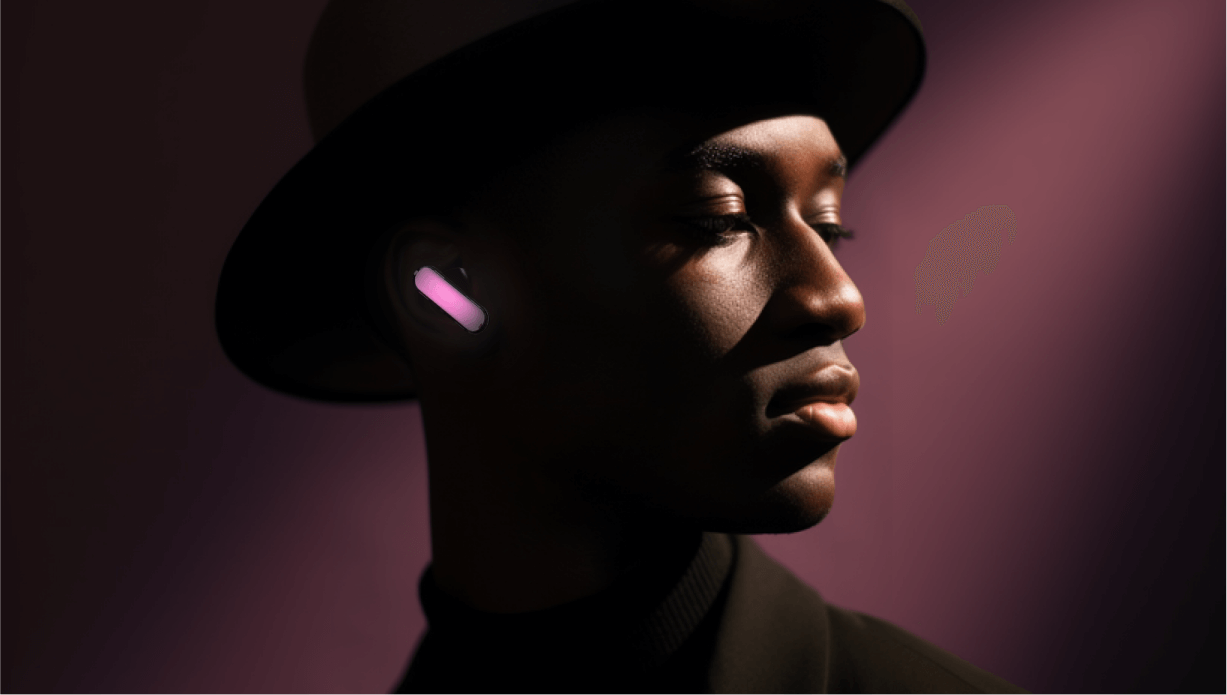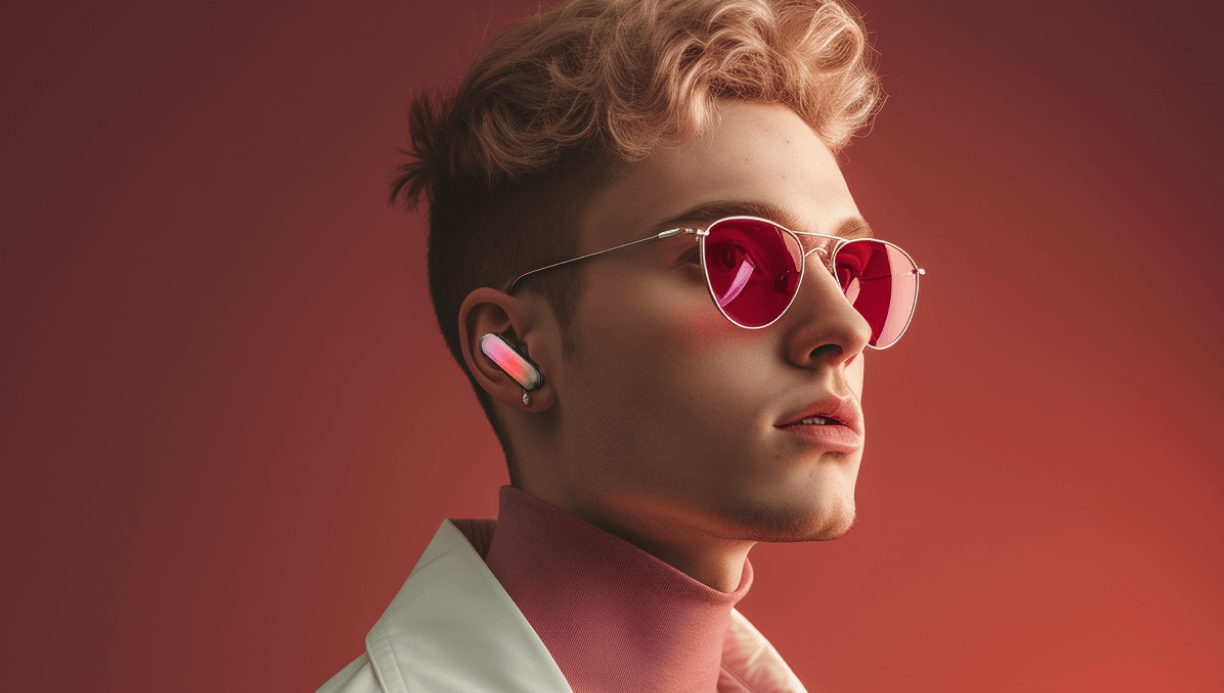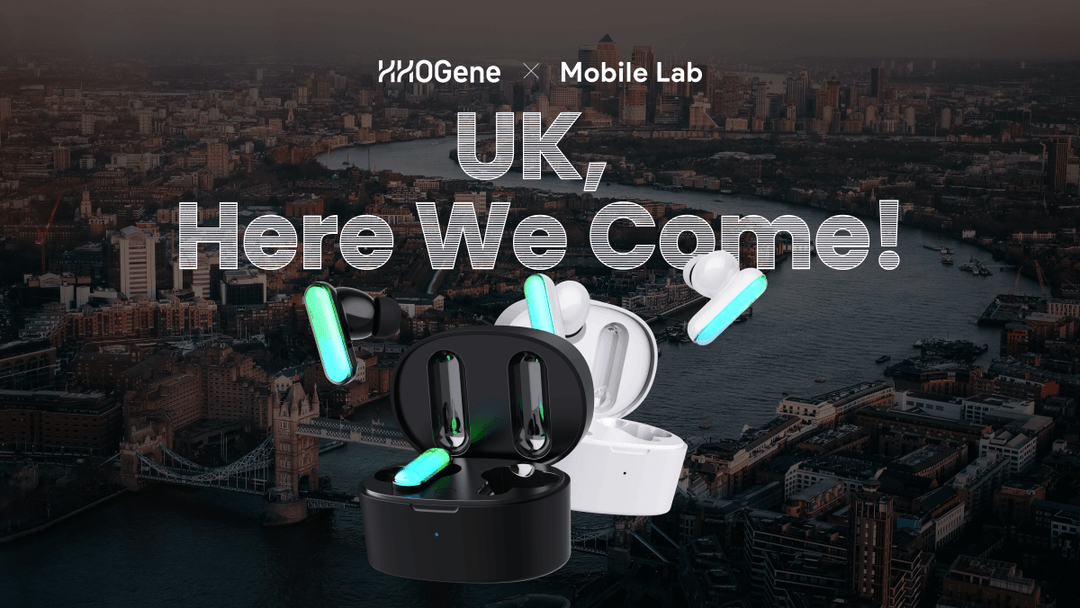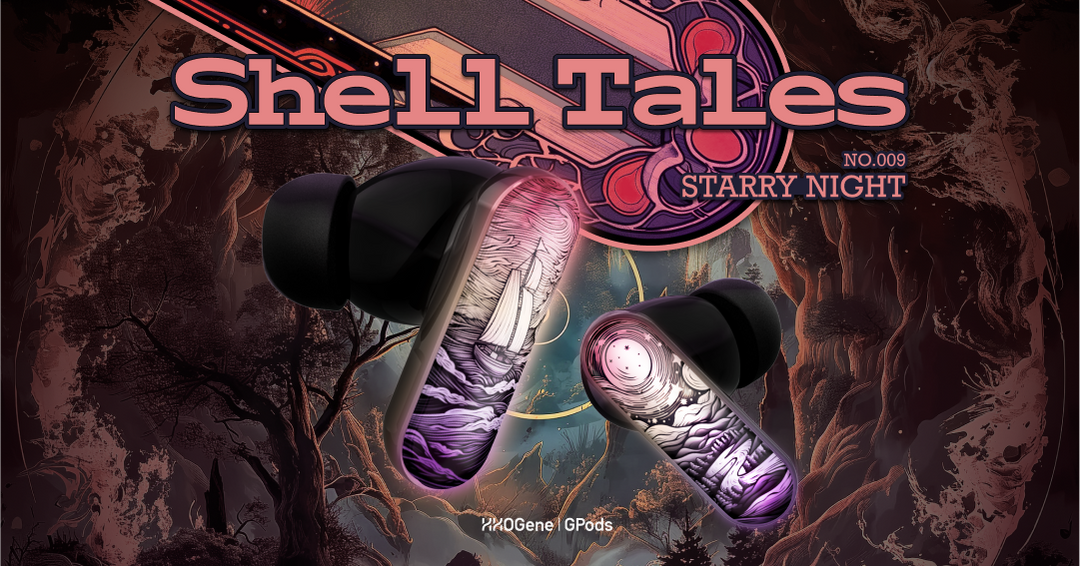Why A Blue LED Is Worth A Nobel Prize
HHOGene GPods, the world's first wireless Bluetooth earbuds with digital light control, have 6 built-in LED light beads. With the digital light control function, it supports 300,000 kinds of color combinations of lights, except for black, which basically includes all the colors needed in daily life.
As modern people, the colorful lights have long been accustomed. But the first human invention of the blue LED lights is still the 90s of last century.
HHOGene GPods, the world's first wireless Bluetooth earbuds with digital light control, have 6 built-in LED light beads. With the digital light control function, it supports 300,000 kinds of color combinations of lights, except for black, which basically includes all the colors needed in daily life.
As modern people, the colorful lights have long been accustomed. But the first human invention of the blue LED lights is still the 90s of last century.
 Long before blue LEDs, red and green LEDs had been invented. But why only blue light is so special? With the invention of blue LED lights, three scientists from the United States and Japan, Isamu Akasaki, Hiroshi Amano, and Shuji Nakamura received the Nobel Prize in Physics in 2014 in recognition of the independent development of blue LED technology in the 1990s, respectively.
Long before blue LEDs, red and green LEDs had been invented. But why only blue light is so special? With the invention of blue LED lights, three scientists from the United States and Japan, Isamu Akasaki, Hiroshi Amano, and Shuji Nakamura received the Nobel Prize in Physics in 2014 in recognition of the independent development of blue LED technology in the 1990s, respectively.
As we know, the three primary colors include red, blue, and green. Red and green light-emitting diodes were introduced as early as the middle of the last century, but in order to use light-emitting diodes for illumination, blue light-emitting diodes had to be invented.
Because the blue LED is produced, the three primary colors were completed. To make a white light display is possible. Now the square big screen LED, cell phones, and TV are using this technology. It has melted into every home.
Blue LED preparation technology has plagued mankind for more than 30 years. In the late 1970s, LED appeared red, orange, yellow, green, emerald green, and other colors and was used in the display light source of machine instruments, but still, no blue LED.
 The market value of blue LED is huge, and it was a worldwide problem of attack at that time. There were many scholars engaged in the research of blue LED at that time, but they all had to choose to give up because they could not make breakthroughs in a series of technical problems such as materials and device manufacturing processes. Many large companies and famous universities and research institutions in the world are also involved in the semiconductor blue light source thin film material preparation process headache. The invention of the blue LED at the time was considered almost impossible.
The market value of blue LED is huge, and it was a worldwide problem of attack at that time. There were many scholars engaged in the research of blue LED at that time, but they all had to choose to give up because they could not make breakthroughs in a series of technical problems such as materials and device manufacturing processes. Many large companies and famous universities and research institutions in the world are also involved in the semiconductor blue light source thin film material preparation process headache. The invention of the blue LED at the time was considered almost impossible.
If Akazaki and Amano gave hope to the research of nitride, Nakamura is the lone wolf and collector of this field.
In 1993, after hundreds of experiments, Shuji Nakamura, who was a technician at Nichia Chemical Industries (Japan), overcame two major material preparation process problems (one is the growth of high-quality gallium nitride film, and the other is the regulation of gallium nitride hole conductivity) in just four years, and independently developed the technology of mass production of gallium nitride crystals, and successfully made high brightness blue LEDs.
Soon after that, people added yellow phosphor to the blue LED to get white light LED. Using this phosphor technology can make LEDs of any color light (such as purple light and pink light). The emergence of blue and white light LEDs has broadened the application fields of LEDs, making possible applications such as full-color LED displays and LED lighting.
The contribution of gallium nitride light-emitting diodes invented by Shuji Nakamura is huge. Blue LEDs were created so that the ternary light-emitting color was completed and the white light display was possible.
The emergence of blue LED makes power-saving high-brightness lighting equipment possible, which has greatly changed people's lives. Products with blue LED technology are now in millions of homes around the world, both in large square LED screens and in your cameras, cell phones, televisions, computers, and monitoring devices.
White lights illuminate houses and streets, and they use much less energy than incandescent and fluorescent lights.
In addition, the blue LEDs can be mixed with phosphorus to produce white light and various other colors of light by the emergence of red and green light. Or generate white light and various other colors of light together with the original red LED and green LED. Blue LEDs also have additional applications. For example, blue light CDs and UV LEDs, which were developed from the blue LEDs, can also efficiently purify domestic water; transmission efficiency of fiber optic communication is improved; ultra-long life and high electro-optical conversion efficiency of all-solid-state white light sources will significantly facilitate the process of green energy development.
As in the award speech, the Nobel Prize Committee wrote.
"Incandescent lamps lit the 20th century, while LED lights will light the 21st century."
HHOGene GPods are the product of the perfect combination of LED and wireless bluetooth earbuds using digital technology. Light up your life, and enjoy the surprise and joy of GPods!
 Find out more about GPods at www.hhogene.com
Find out more about GPods at www.hhogene.com
As modern people, the colorful lights have long been accustomed. But the first human invention of the blue LED lights is still the 90s of last century.
HHOGene GPods, the world's first wireless Bluetooth earbuds with digital light control, have 6 built-in LED light beads. With the digital light control function, it supports 300,000 kinds of color combinations of lights, except for black, which basically includes all the colors needed in daily life.
As modern people, the colorful lights have long been accustomed. But the first human invention of the blue LED lights is still the 90s of last century.
 Long before blue LEDs, red and green LEDs had been invented. But why only blue light is so special? With the invention of blue LED lights, three scientists from the United States and Japan, Isamu Akasaki, Hiroshi Amano, and Shuji Nakamura received the Nobel Prize in Physics in 2014 in recognition of the independent development of blue LED technology in the 1990s, respectively.
Long before blue LEDs, red and green LEDs had been invented. But why only blue light is so special? With the invention of blue LED lights, three scientists from the United States and Japan, Isamu Akasaki, Hiroshi Amano, and Shuji Nakamura received the Nobel Prize in Physics in 2014 in recognition of the independent development of blue LED technology in the 1990s, respectively.As we know, the three primary colors include red, blue, and green. Red and green light-emitting diodes were introduced as early as the middle of the last century, but in order to use light-emitting diodes for illumination, blue light-emitting diodes had to be invented.
Because the blue LED is produced, the three primary colors were completed. To make a white light display is possible. Now the square big screen LED, cell phones, and TV are using this technology. It has melted into every home.
Blue LED preparation technology has plagued mankind for more than 30 years. In the late 1970s, LED appeared red, orange, yellow, green, emerald green, and other colors and was used in the display light source of machine instruments, but still, no blue LED.
 The market value of blue LED is huge, and it was a worldwide problem of attack at that time. There were many scholars engaged in the research of blue LED at that time, but they all had to choose to give up because they could not make breakthroughs in a series of technical problems such as materials and device manufacturing processes. Many large companies and famous universities and research institutions in the world are also involved in the semiconductor blue light source thin film material preparation process headache. The invention of the blue LED at the time was considered almost impossible.
The market value of blue LED is huge, and it was a worldwide problem of attack at that time. There were many scholars engaged in the research of blue LED at that time, but they all had to choose to give up because they could not make breakthroughs in a series of technical problems such as materials and device manufacturing processes. Many large companies and famous universities and research institutions in the world are also involved in the semiconductor blue light source thin film material preparation process headache. The invention of the blue LED at the time was considered almost impossible.If Akazaki and Amano gave hope to the research of nitride, Nakamura is the lone wolf and collector of this field.
In 1993, after hundreds of experiments, Shuji Nakamura, who was a technician at Nichia Chemical Industries (Japan), overcame two major material preparation process problems (one is the growth of high-quality gallium nitride film, and the other is the regulation of gallium nitride hole conductivity) in just four years, and independently developed the technology of mass production of gallium nitride crystals, and successfully made high brightness blue LEDs.
Soon after that, people added yellow phosphor to the blue LED to get white light LED. Using this phosphor technology can make LEDs of any color light (such as purple light and pink light). The emergence of blue and white light LEDs has broadened the application fields of LEDs, making possible applications such as full-color LED displays and LED lighting.
The contribution of gallium nitride light-emitting diodes invented by Shuji Nakamura is huge. Blue LEDs were created so that the ternary light-emitting color was completed and the white light display was possible.
The emergence of blue LED makes power-saving high-brightness lighting equipment possible, which has greatly changed people's lives. Products with blue LED technology are now in millions of homes around the world, both in large square LED screens and in your cameras, cell phones, televisions, computers, and monitoring devices.
White lights illuminate houses and streets, and they use much less energy than incandescent and fluorescent lights.
In addition, the blue LEDs can be mixed with phosphorus to produce white light and various other colors of light by the emergence of red and green light. Or generate white light and various other colors of light together with the original red LED and green LED. Blue LEDs also have additional applications. For example, blue light CDs and UV LEDs, which were developed from the blue LEDs, can also efficiently purify domestic water; transmission efficiency of fiber optic communication is improved; ultra-long life and high electro-optical conversion efficiency of all-solid-state white light sources will significantly facilitate the process of green energy development.
As in the award speech, the Nobel Prize Committee wrote.
"Incandescent lamps lit the 20th century, while LED lights will light the 21st century."
HHOGene GPods are the product of the perfect combination of LED and wireless bluetooth earbuds using digital technology. Light up your life, and enjoy the surprise and joy of GPods!
 Find out more about GPods at www.hhogene.com
Find out more about GPods at www.hhogene.com









Leave a comment